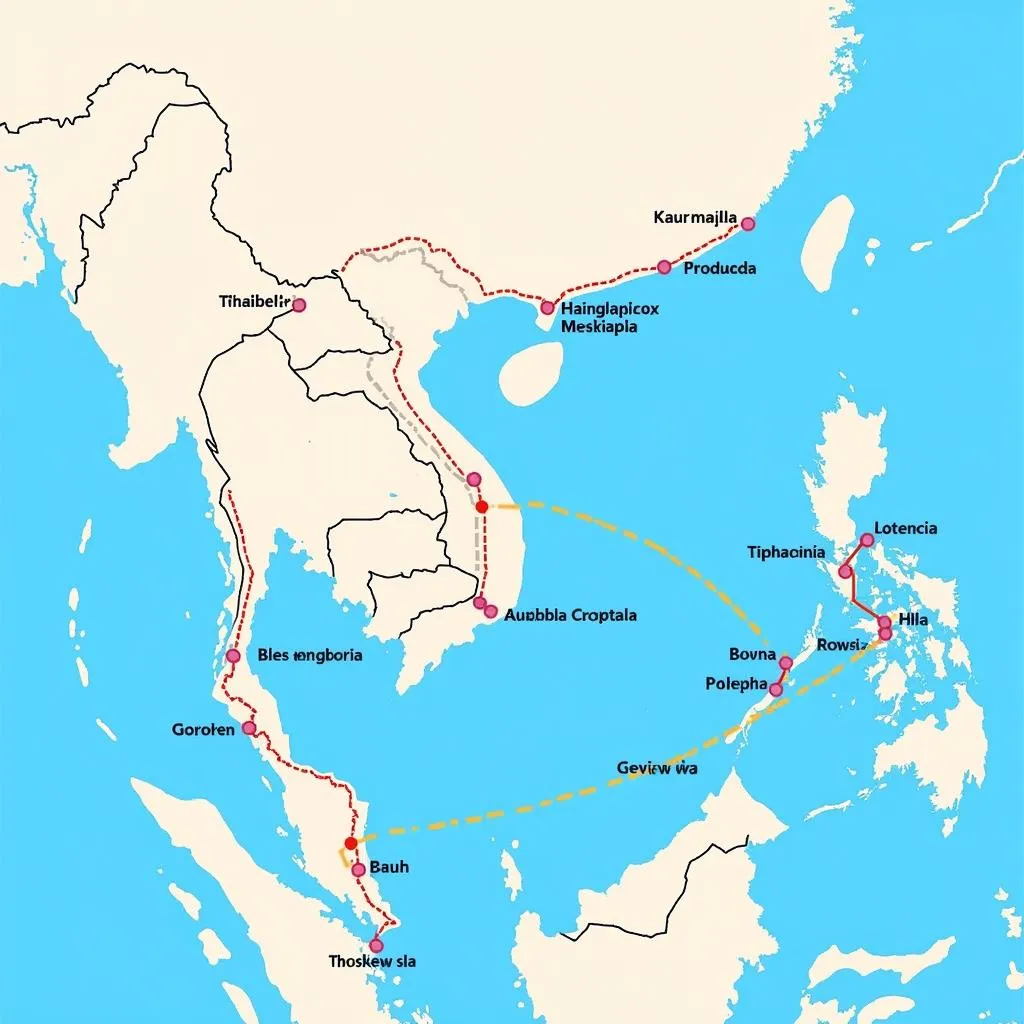The ASEAN Single Aviation Market (ASAM), also known as “Apa Itu Asean Single Aviation Market” in Indonesian, represents a significant step towards regional integration in Southeast Asia. It aims to liberalize air travel within the ASEAN region, fostering greater connectivity, boosting tourism, and stimulating economic growth. This initiative allows designated airlines from ASEAN member states to operate freely within the region, offering passengers more choices, competitive fares, and seamless travel experiences.
What is the ASEAN Single Aviation Market (ASAM)?
The ASAM is a key component of the ASEAN Economic Community (AEC) blueprint, aiming to create a single, unified aviation market within the ASEAN region. It involves the liberalization of air services, allowing designated airlines to operate flights between and within member states with fewer restrictions. This open skies policy promotes competition, increases flight frequencies, and ultimately benefits travelers with lower fares and more travel options.
Key Objectives of the ASAM
- Enhanced Connectivity: ASAM aims to connect ASEAN countries more effectively, facilitating easier movement of people and goods within the region.
- Economic Growth: Increased air travel stimulates tourism, trade, and investment, contributing to overall economic development.
- Consumer Benefits: Passengers enjoy greater choice, competitive fares, and improved service quality.
- Regional Integration: ASAM strengthens cooperation and integration among ASEAN member states.
How Does ASAM Work?
ASAM is based on the principle of open skies, allowing designated airlines from ASEAN member states to fly freely within the region. This means airlines can operate flights between any two ASEAN destinations without needing separate bilateral agreements. This framework simplifies the process of establishing new air routes and expanding existing ones. The ASEAN Air Transport Agreement plays a crucial role in implementing ASAM.
Benefits for Travelers
The ASAM has brought numerous benefits for travelers, including:
- Increased Flight Options: More airlines operate within the region, offering a wider selection of flights to choose from.
- Competitive Fares: Increased competition among airlines leads to lower airfares, making air travel more affordable.
- Seamless Travel: Simplified procedures and streamlined processes make traveling within the ASEAN region more convenient.
- Improved Connectivity: ASAM connects even remote areas, opening up new travel possibilities.
Challenges and Future of ASAM
While ASAM has made significant progress, it still faces certain challenges, such as:
- Harmonization of Regulations: Different regulations and standards among member states can create complexities.
- Infrastructure Development: Upgrading airport infrastructure and air traffic management systems is crucial for accommodating increased air traffic.
- Competition Concerns: Balancing the interests of national carriers and promoting fair competition is essential.
 ASAM Challenges and Opportunities
ASAM Challenges and Opportunities
The future of ASAM lies in addressing these challenges and further deepening integration. This involves greater cooperation among member states, harmonizing regulations, investing in infrastructure, and promoting fair competition. These efforts will ultimately strengthen the ASEAN Single Aviation Market and further enhance its benefits for travelers and the region as a whole.
Quote from Dr. Amelia Tan, a leading aviation economist: “ASAM represents a major milestone for ASEAN, facilitating greater regional connectivity and promoting economic growth. Continued efforts towards harmonization and infrastructure development will be key to realizing its full potential.”
Conclusion
The ASEAN Single Aviation Market (ASAM) is a transformative initiative that has significantly impacted air travel within Southeast Asia. By liberalizing air services and promoting competition, ASAM has brought numerous benefits for travelers, including increased flight options, competitive fares, and improved connectivity. Addressing the remaining challenges will be crucial to ensuring the continued success and further strengthening the ASEAN Single Aviation Market, making it a driving force for regional integration and economic growth. Understanding “apa itu asean single aviation market” is key to appreciating its transformative power in Southeast Asia.
FAQ
- What does ASAM stand for? ASAM stands for the ASEAN Single Aviation Market.
- Which countries are part of ASAM? ASAM encompasses all ten member states of ASEAN.
- How has ASAM benefited travelers? Travelers benefit from increased flight options, competitive fares, and seamless travel within the region.
- What are the key challenges facing ASAM? Challenges include harmonizing regulations, developing infrastructure, and addressing competition concerns.
- What is the future of ASAM? The future of ASAM lies in deeper integration, further liberalization, and addressing the existing challenges.
- What is the role of the ASEAN Air Transport Agreement? The ASEAN Air Transport Agreement provides the legal framework for ASAM.
- How does ASAM contribute to economic growth? ASAM stimulates tourism, trade, and investment, contributing to regional economic development.
Other questions related to “apa itu asean single aviation market” might include:
- What is the history of ASAM?
- How is ASAM impacting specific ASEAN countries?
- What are the future plans for ASAM expansion?
For more information, please explore other related articles on our website.
Need support? Contact us 24/7 at Phone Number: 0369020373, Email: [email protected] or visit our office at: Thon Ngoc Lien, Hiep Hoa, Bac Giang, Vietnam.


